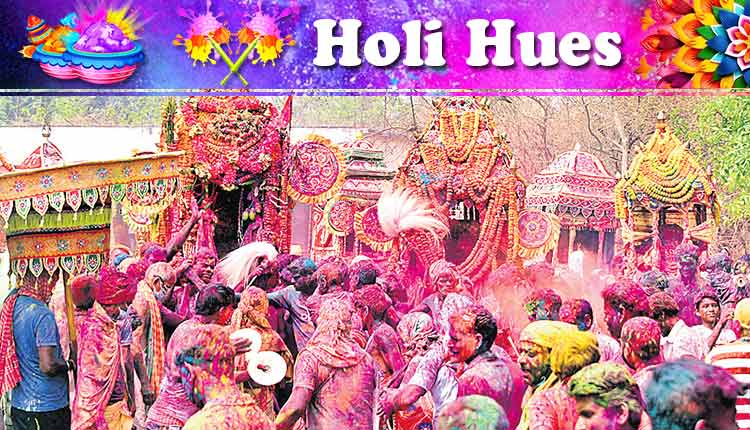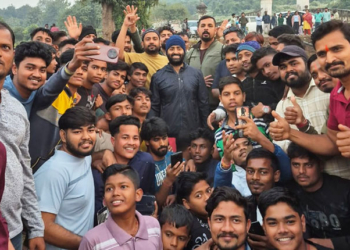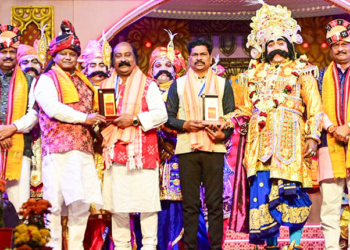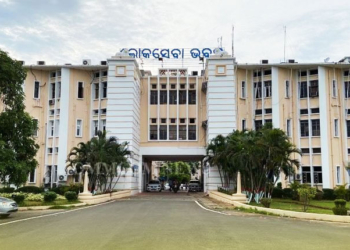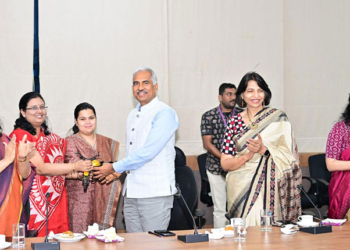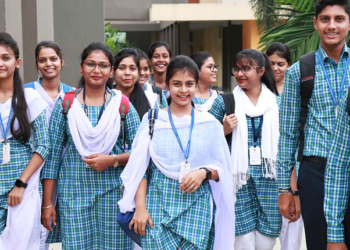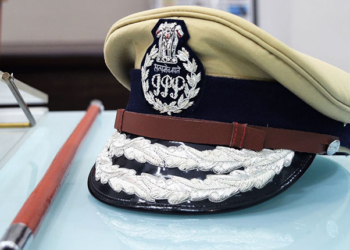Bhubaneswar: At a time when the festivals are losing their essence, the residents of Madanpur, a village on the outskirts of Odisha’s capital city Bhubaneswar, haven’t forgotten their roots.
For residents of Madanpur, Dola or Basant Ustav which coincides with Holi is a big occasion. The residents have been celebrating Dola Yatra or Holi for over 400 years without deviating from their age-old traditions. Let’s visit the village to know more about the special features of Holi celebrations at Madanpur.
Uniqueness of Holi Celebrations at Madanpur
According to sources, the Holi celebration continues for 15 days at Madanpur. The uniqueness of melana tradition is that deities from 23 nearby villages are congregated at the vast ‘melana’ ground.
Going by the traditions, on the day of Trayodashi Chandrasekhar Dev, the representative idol of Lord Nilakantheswar placed in a decorated Biman or palanquin is taken out of the temple in a grand procession amidst ‘sankirtan’, traditional dances like Paika dance and Naga dance, the beating of gongs and bursting of firecrackers.
The display of fireworks is a special feature that attracts thousands of people to witness the festivity at Madanpur. After Raghurajpur, Panchu Dola Melan at Madanpur is unique in many respects.
Also, Harihara Bheta is another attraction of the Melana. Lord Nilakantheswar of Madanpur village and Lord Balunkeswar of Tamando are considered siblings. Lords Nilakantheswar and Balunkeswar symbolise Lord Shiva aka Hara, and Lord Chaitanya Mahaprabhu of Jagasarapatna symbolises Lord Krishna aka Hari. The idol of Chaitanya Mahaprabhu is taken out of the temple for a meeting with Lords Nilakantheswar and Balunkeswar. Their union is called Harihara Bheta (meeting of Hari with Hara).
Dola Utsav is an occasion when God descends on earth to play Holi with his devotees. The festival witnesses a footfall of more than 10,000. On the night of Jamana, fireworks worth lakhs are burst across the Melana ground. Saints of various sects also grace the occasion, said sources.
It is said that one gets his/her wish fulfilled if she/he consumes Pitha Bhoga offered to Chandrasekhar Dev during the festivity. Cultural events like sankirtan and folk dance performances add radiance to the festivity.
Deities from as many as 23 villages are brought to meet Lord Chandrasekhar Dev to mark the culmination of the Dola Parva.
Saralabani ritual is held to mark the culmination of Melana Utsav. On the very day when the Odia almanac is read, the Lord visits Jagasarapatna to take bhog. The Lord visits 12 villages in 12 days in procession. It also visits door-to-door when people put colours to the deities and offer bhog, known as ‘Chacheri Bhoga’ Lord Nilakantheswar is brought back to the sanctum sanctorum of the temple following the end of the 15-day festivity.
By Rashmi Rekha Das




